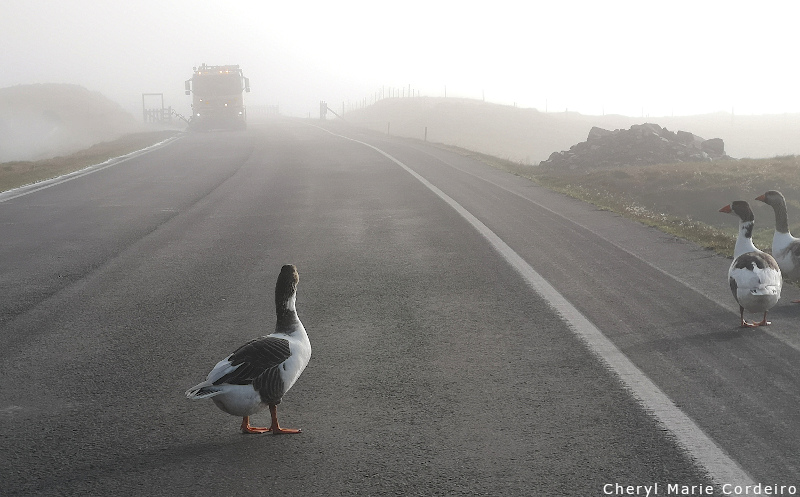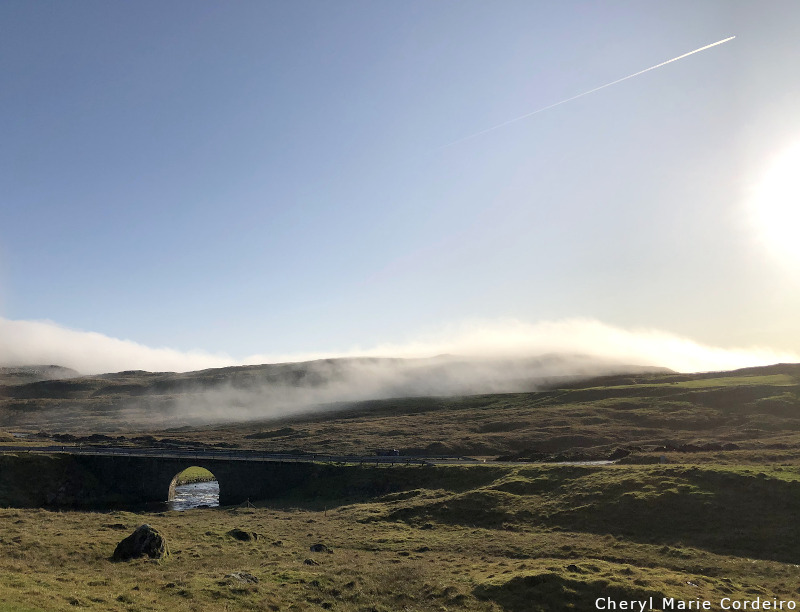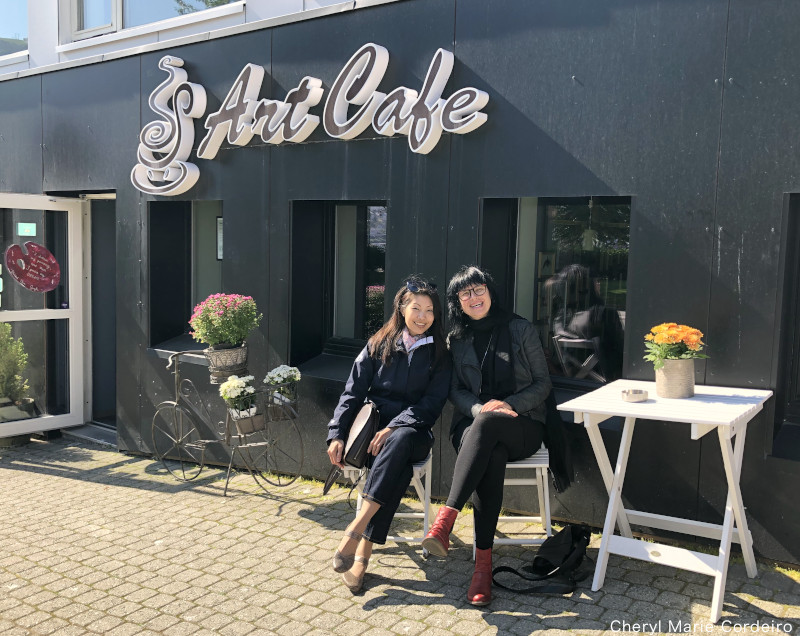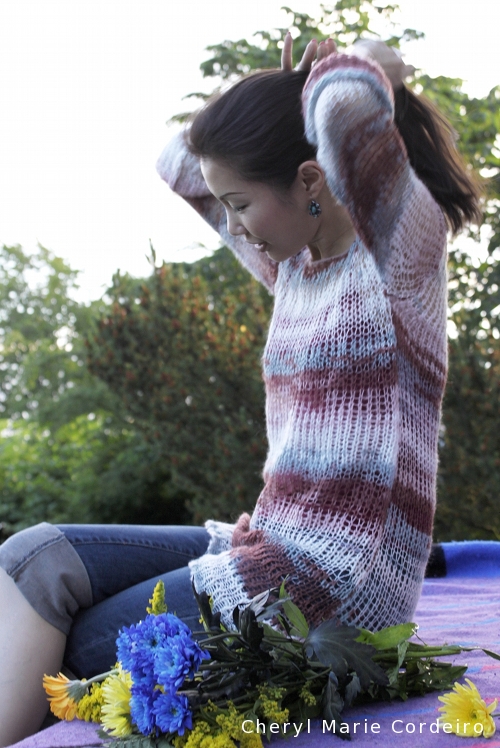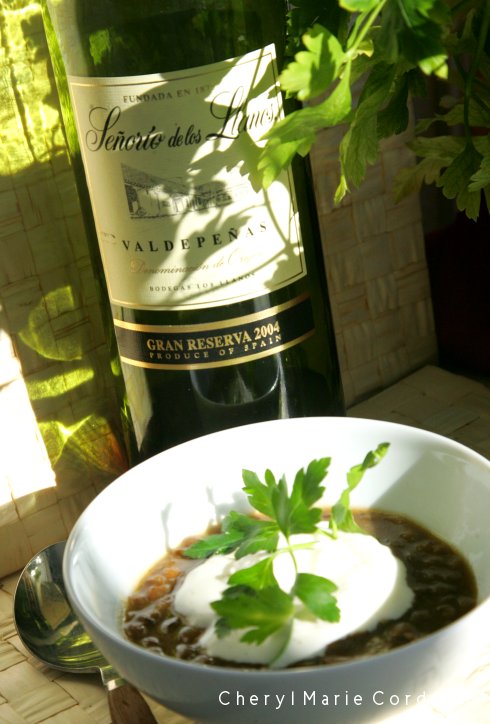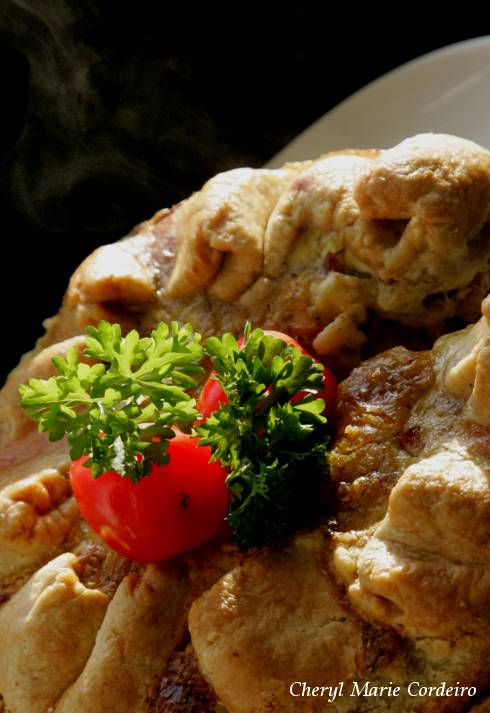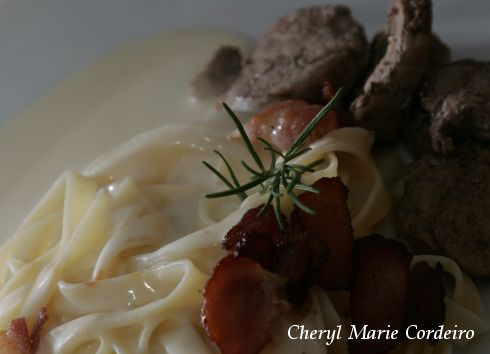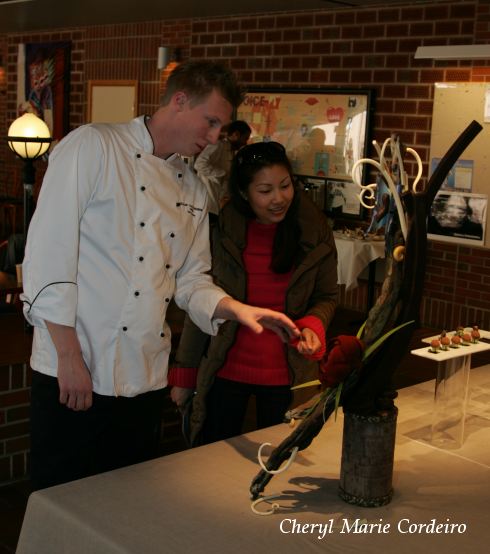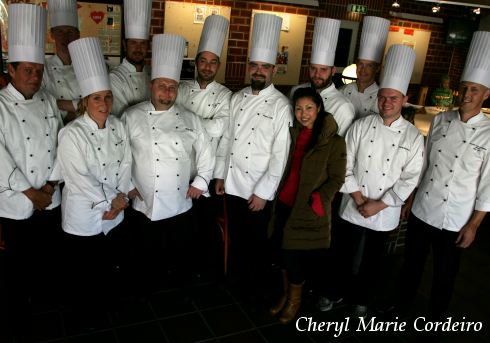About an hour´s drive to the south west of Tórshavn, the capital of the Færoe Islands is the village of Kirkjubøur. The road there is mystic when swept in the mist, giving you a strange feeling of traveling in time as well as place. Here, a surreal encounter with some Færoese geese, who seem to actively contemplate their options/chances with the oncoming truck. No geese were harmed in this incident. The Færoese goose is likely to be the oldest form of tame goose in Europe, brought by Icelandic people during the Medieval period.
Text & Photo © JE Nilsson & CM Cordeiro 2019
St. Magnus Cathedral is a cathedral ruin located in the village of Kirkjubøur on the island of Streymoy in the Færoe Islands. The ruins are the largest medieval building in the Færoe Islands.
The building was initiated by Bishop Erlendur around the year 1300. The building appears as never having been completed but it is unclear how close to completion the project come. During recent investigation pieces of a roof vault and some fragments of paint have been found. It also appears as if details of the interior might have migrated between various churches on the Islands making it difficult to tell what was actually intended to be where.
What is interesting is naturally to which extent the material ruin can help us understand the earliest history of the Færoe Islands and thus, the earliest history of all North Atlantic tribes and cultures.
Continue reading “Mururin – The St. Magnus Cathedral at the Færoe Islands, 2019”
